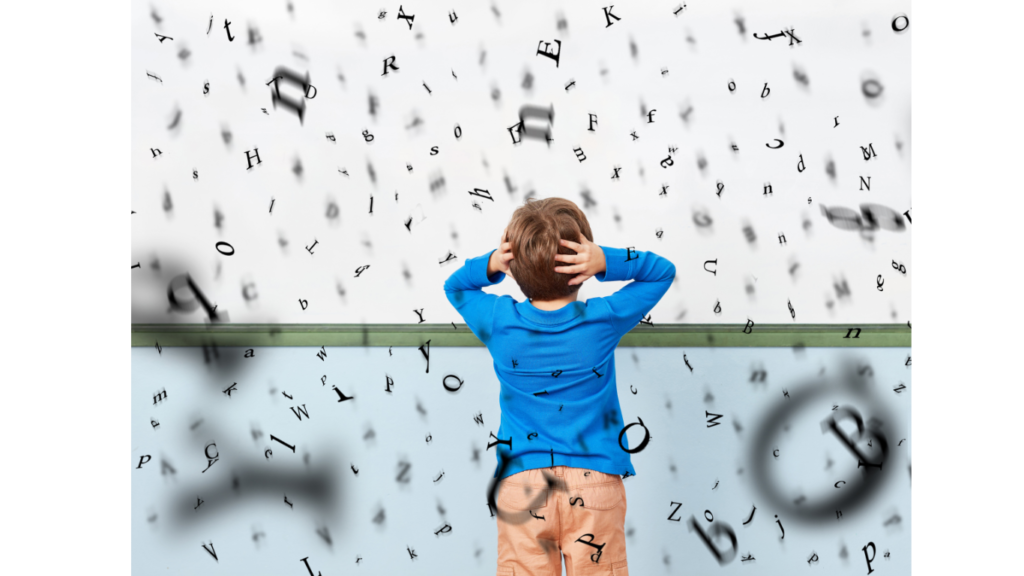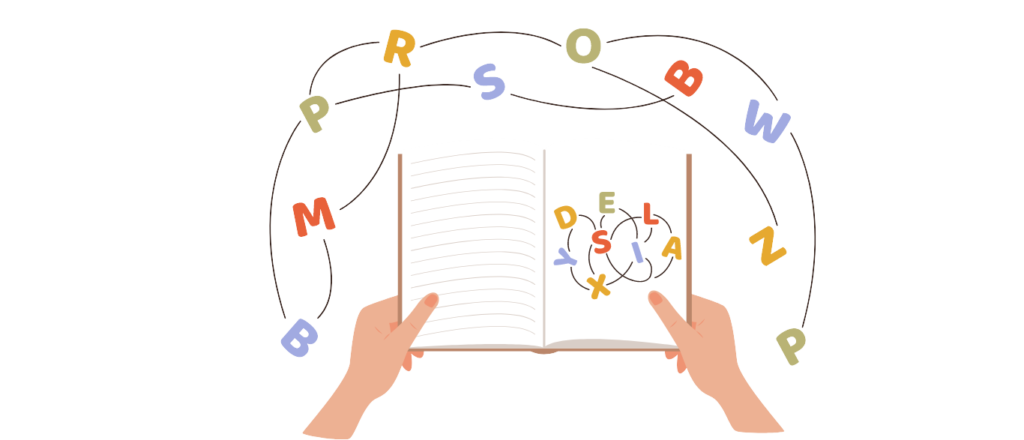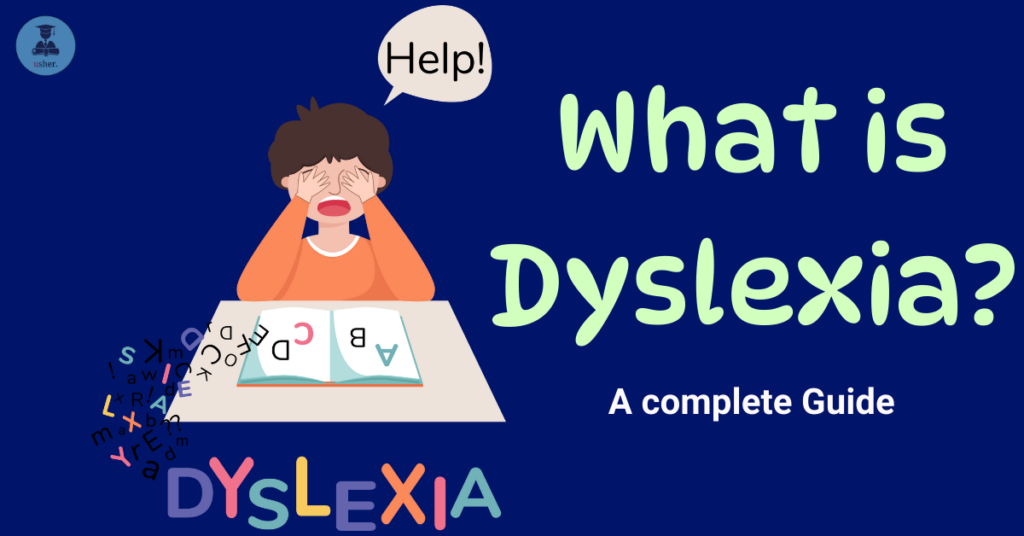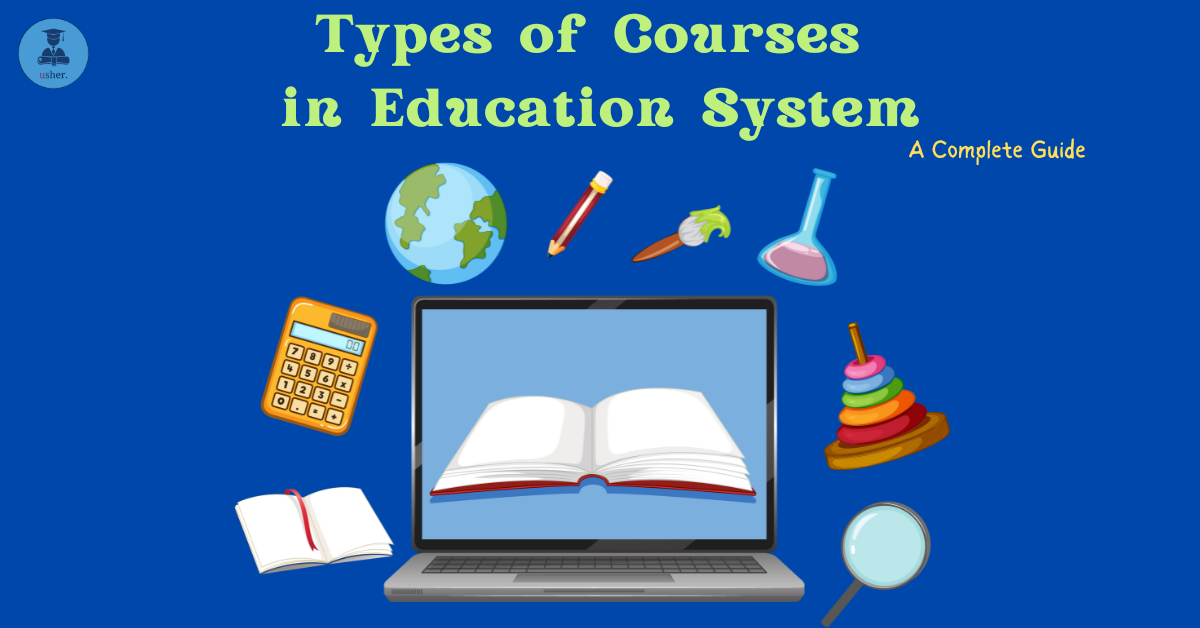What is Dyslexia?
Dyslexia, also known as a learning disability, is a learning disorder that affects a person’s ability to read, write, and spell.
It is characterized by difficulties with phonological processing, which can make it challenging for individuals to decode words and recognize letter sounds.
Dyslexia is not related to intelligence or vision problems but rather stems from differences in the way the brain processes language.
Despite these challenges, individuals with dyslexia can excel in various areas and contribute to society in meaningful ways.
Dyslexia in Students
Students with dyslexia experience difficulties in academic settings, particularly in language-based subjects such as reading and writing.
They may struggle with reading fluency, comprehension, and spelling, which can impact their overall academic performance.
These challenges can also lead to feelings of frustration, low self-esteem, and anxiety in students with dyslexia.

Why and how does dyslexia happen?
Dyslexia is caused by individual variances in the brain regions responsible for reading. It often runs in families. Dyslexia seems to be associated with certain genes that influence how the brain interprets reading and language. You can learn more about the history of dyslexia here.
Is dyslexia common in students?
Dyslexia is a condition that is quite common among students.
- According to the International Dyslexia Association, it is commonly estimated that dyslexia affects about 15-20% of the population.
- Prevalence rates can vary by country. For example, in the United States, the National Institutes of Health suggests that about 5–10% of the population has dyslexia. According to PIB in India, the rate is around 15%.
(list of major countries’ dyslexic rate) - Dyslexia exists on a spectrum, and individuals may experience it to varying degrees of severity. Some may have mild challenges, while others may face more significant difficulties.
- There is a perception that dyslexia affects more males than females, but it’s important to note that this might be due to differences in how dyslexia manifests in boys and girls. Girls may be underdiagnosed because their symptoms can be subtler.
- The identification of dyslexia may become more accurate as students progress through their academic journey and encounter increased literacy demands.
Debunking the myths revolving around dyslexia
- Dyslexia is a sign of low intelligence:
- Myth: People with dyslexia are not as smart as those without it.
- Reality: Dyslexia is unrelated to intelligence; individuals with dyslexia often have average or above-average intelligence.
- Dyslexia only affects reading:
- Myth: Dyslexia is limited to difficulties in reading.
- Reality: Dyslexia can impact various aspects of learning, including writing, spelling, and sometimes, math.
- Dyslexia can be outgrown:
- Myth: Children will eventually grow out of dyslexia with time.
- Reality: Dyslexia is a lifelong condition, but early intervention and appropriate support can significantly improve outcomes.
- Dyslexia is a rare condition:
- Myth: Dyslexia is uncommon, and only a few individuals have it.
- Reality: Dyslexia is prevalent worldwide, affecting a significant portion of the population.
- Dyslexia is a visual perception problem:
- Myth: Dyslexia is primarily caused by difficulties with visual processing.
- Reality: Dyslexia is rooted in neurobiological differences, particularly in the areas of the brain responsible for language processing.
- Individuals with dyslexia are lazy or unmotivated:
- Myth: People with dyslexia are lazy and lack motivation to succeed.
- Reality: Dyslexia has no correlation with work ethic or motivation; individuals with dyslexia often exert significant effort to overcome challenges.
- Dyslexia cannot be diagnosed or treated:
- Myth: Dyslexia is not a valid or diagnosable condition, and there is no effective treatment.
- Reality: Dyslexia can be diagnosed through various assessments, and early intervention strategies and educational support can make a significant difference.
- Using a specific font can cure dyslexia:
- Myth: Changing fonts can eliminate reading difficulties associated with dyslexia.
- Reality: While certain fonts may make reading slightly easier for some individuals, they do not address the underlying neurobiological factors of dyslexia.
- Myth: Dyslexia only affects boys.
- Reality: Dyslexia can affect both boys and girls. However, it may manifest differently, leading to underdiagnosis in girls.
NOTE: Medical causes, medical symptoms, medical diagnosis, and medical treatments regarding dyslexia can be found here.
How do you recognize dyslexia symptoms in the classroom?
Recognizing dyslexia signs and symptoms in the classroom necessitates instructors being vigilant and attentive to numerous elements of their students’ academic performance and conduct. It’s crucial to remember that dyslexia presents differently in each person, with symptoms ranging from mild to severe.
Here are some common signs that may indicate dyslexia in a classroom setting:
Reading Challenges
- Difficulty decoding words, leading to slow and inaccurate reading.
- Trouble recognizing common sight words.
- Inconsistency in word recognition.
Spelling Difficulties:
- Phonetic spelling errors, where words are spelled based on how they sound rather than following conventional spelling rules.
- Frequent spelling mistakes, even with familiar words.
Writing Challenges
- Poor grammar and punctuation.
- Difficulty organizing thoughts coherently in writing.
- Struggles with written expression and composition.
Phonological Awareness Issues
- Difficulty recognizing and manipulating the sounds within words.
- Challenges with rhyming, blending sounds, and segmenting words into individual sounds.
Reading Comprehension Problems
- Difficulty understanding and remembering the main ideas of a passage.
- Limited ability to make connections between different parts of a text.
Slow Reading Rate
- Reads at a slower pace than peers, with difficulties maintaining age-appropriate reading speed.
Directional Confusion
- Difficulty distinguishing left from right.
- May confuse letters or numbers with similar shapes (e.g., b and d, 6 and 9).
Working Memory Challenges
- Difficulty holding and manipulating information in working memory, impacting tasks that involve multi-step processes.
Spatial Organization Issues
- Challenges with spatial orientation, such as difficulties with maps, charts, and graphs.
Inconsistency in Performance
- Inconsistencies in academic performance across different subjects.
- There are wide gaps between verbal abilities and reading and writing abilities.
Avoidance of Reading and Writing
- Reluctance to engage in activities that involve significant reading or writing.
- Students may avoid reading aloud in class.
Difficulty Learning a Foreign Language
- Struggles with language acquisition, particularly when it involves reading and writing in a second language.

The importance of Parental Observations and Communication
Parental observations and communication play a crucial role in the identification and support of students with dyslexia. Parents are often the first to notice signs of dyslexia in their child. By sharing their observations with teachers and other professionals, parents can help ensure that their child receives the necessary support and accommodations. Additionally, open communication between parents and educators allows for a collaborative approach in developing effective strategies to address the specific needs of students with dyslexia.
The following list of factors emphasizes how important it is to include parents in the process:
Insight into Early Development
Parents have a unique insight into their child’s early development, which can be crucial in identifying signs of dyslexia at an early stage. This knowledge can greatly contribute to early intervention and tailored support for the child.
Parents are often the first to observe their child’s early development, including language acquisition, speech, and pre-literacy skills. They can provide valuable insights into any atypical patterns or delays.Family History of Dyslexia
Another important factor to consider is the family history of dyslexia. Parents who have a history of dyslexia themselves may be more aware of the signs and symptoms to look out for in their child. This knowledge can help professionals make a more accurate diagnosis and develop appropriate intervention strategies.
Behavioral Observations at Home
By observing how a child interacts with their environment, their play patterns, and their social interactions, parents can gain further insights into any potential developmental delays or atypical behaviors. These observations can add to the data that parents have provided and help gain a more complete understanding of the child’s overall development.
Insight into Reading Habits
By paying attention to a child’s reading habits, such as their level of interest, comprehension skills, and reading speed, parents gather valuable information about their cognitive abilities and potential learning difficulties. This insight can assist professionals in identifying any specific areas of concern and tailoring appropriate interventions to support the child’s reading development.
Consistency of Challenges
Parents may learn about a child’s resilience and problem-solving abilities by seeing how consistently they handle obstacles. Determining the child’s general development and pinpointing any areas that could need more attention can be done with the use of this information. In addition, recognizing a child’s pattern of overcoming obstacles may assist caregivers in evaluating the child’s emotional health and offering suitable methods to support it.
Collaboration for Intervention Planning
Collaboration among parents, teachers, and other professionals is crucial for effective intervention planning. By working together, they can share insights and observations about the child’s reading development, exchange ideas, and develop a comprehensive plan that addresses the child’s specific needs. This collaborative approach ensures that interventions are tailored to the child’s unique strengths and challenges, leading to more successful outcomes in their reading development journey.
Supporting Emotional Well-being
Dyslexia might have a negative impact on a child’s emotional health and self-esteem. In the event that their child experiences any changes in their emotional state or behavior as a result of scholastic difficulties, parents are able to provide emotional support and reassurance.
Parents can seek guidance from mental health professionals or support groups to further support their child’s emotional well-being.Shared Responsibility for Support
Parents and educators should work together to create a supportive environment for the child with dyslexia. This includes open communication, regular meetings, and collaboration on strategies to address the child’s specific needs. By sharing the responsibility for support, both parents and educators can ensure that the child receives consistent and effective interventions that promote their reading development.
Enhanced Communication Channels
Establishing trust with parents through open communication and encouraging continued discourse are both beneficial. Because of this, the interchange of information regarding the child’s progress is made easier, which in turn makes it possible to make timely adjustments to support techniques.
Parental Advocacy
Parents can play a crucial role in advocating for their child’s needs within the educational system. By actively participating in Individualized Education Program (IEP) meetings and voicing concerns or suggestions, parents can help ensure that their child’s specific reading needs are being addressed effectively.
Parents, armed with knowledge about dyslexia, can become advocates for their child within the educational system. Their advocacy efforts can contribute to improved support and accommodations.Strengthening the Home-School Partnership
Parental involvement helps to strengthen the cooperation that exists between the home and the school. It encourages a collaborative approach to meeting the educational requirements of the student, thereby generating an environment that is positive and supportive of learning.

What tests help in the diagnosis of dyslexia in students?
Specialists with training and experience carry out a variety of evaluations as part of the diagnostic process for dyslexia. These tests are designed to measure a variety of academic and cognitive abilities in order to establish whether or not dyslexia is present and to what degree it is present.
Here are some examples of diagnostic assessments commonly used in the evaluation of dyslexia:
Standardized Reading and Spelling Tests
- Word Recognition Tests: Assess the ability to recognize and pronounce words accurately.
- Spelling Tests: Evaluate spelling abilities and phonetic decoding skills.
Phonological Awareness Assessments
- Rhyming Tasks: Measure the ability to recognize and generate rhyming words.
- Phonemic Segmentation: Assess the skill of breaking words into individual sounds.
Processing Speed Assessments
- Evaluate the speed at which a person can perform cognitive tasks, which can be an important factor in understanding reading difficulties.
- Evaluate the speed at which a person can perform cognitive tasks, which can be an important factor in understanding reading difficulties.
Working Memory Tests
Measure the ability to hold and manipulate information in the mind while completing a task. These tests assess the individual’s capacity to remember and use information, which can impact reading comprehension.Visual and Auditory Processing Assessments
Evaluate how well an individual can process and interpret visual and auditory information, which are essential skills for reading and understanding written language. These assessments can identify any difficulties in perceiving and discriminating between different sounds or visual stimuli, which may contribute to reading challenges.Cognitive Ability Tests
Assess an individual’s overall cognitive functioning, including their problem-solving skills, reasoning abilities, and memory capacity. These tests provide insight into a person’s intellectual capabilities and can help identify any cognitive weaknesses that may affect reading comprehension. Additionally, they can also help determine an individual’s potential for learning and academic success.Reading Fluency Assessments
Measure a person’s ability to read text accurately, quickly, and with proper expression. These assessments can identify any difficulties in word recognition, decoding, or automaticity that may hinder reading comprehension. They can also provide information on a person’s reading rate and fluency level, which are important factors in determining overall reading proficiency.Comprehensive Writing Assessments
Evaluate a person’s writing skills, including their ability to organize ideas, use proper grammar and punctuation, and convey information effectively. These assessments can identify areas of weakness in writing mechanics and provide feedback on areas for improvement.Observations in Natural Settings
Observe individuals in real-life situations, such as classrooms or workplaces, to gain insight into their reading and writing abilities. This method allows for a more holistic understanding of how individuals apply their skills in practical settings and can reveal any challenges they may face in real-world scenarios.Family and Developmental History Interviews
Conduct interviews with individuals and their families to gather information about their educational background, language development, and any potential learning disabilities or challenges they may have faced in the past. This approach can provide valuable context and help identify any underlying factors that may be influencing their abilities.Educational and School History Review
Reviewing an individual’s educational and school history can provide insights into their academic achievements, learning styles, and any previous interventions or accommodations that have been implemented. This information can help in tailoring interventions and support strategies to meet their specific needs.
Importance of timely diagnosis of dyslexia for effective intervention
For successful intervention and successful academic outcomes, dyslexia diagnosis must occur as soon as possible.
Here are several reasons highlighting the importance of early identification and intervention:
Early Support for Academic Success
Early identification and intervention allows for targeted support to be provided to students with dyslexia, enabling them to develop the necessary skills and strategies to succeed academically.
Early support can prevent academic difficulties from escalating and help students reach their full potential.
Preventing Academic Frustration
Early identification and intervention can prevent academic frustration for students with dyslexia. By identifying and addressing their specific learning needs early on, students can receive the necessary accommodations and support to navigate their academic challenges. This can help prevent feelings of frustration, low self-esteem, and disengagement from school, ultimately promoting a positive learning experience.
Building Foundational Skills
Building foundational skills is crucial for students with dyslexia to succeed academically. By focusing on developing strong reading, writing, and phonological awareness skills, students can improve their overall literacy abilities and become more confident learners. Providing targeted interventions and specialized instruction can help students build these foundational skills and bridge any gaps in their learning, setting them up for long-term success in their academic pursuits.
Preventing Emotional Impact
Dyslexia can often lead to feelings of frustration, low self-esteem, and anxiety, which can hinder a student’s overall well-being and motivation to learn. Timely intervention reduces the emotional impact. By creating a supportive and inclusive environment and implementing strategies such as positive reinforcement and individualized support, educators can help mitigate the emotional impact of dyslexia and foster a positive mindset towards learning.
Customized Learning Plans
With an early diagnosis, teachers can come up with specialized lesson plans that capitalize on the student’s strengths and correct areas of weakness. These individualized lesson plans may incorporate accommodations and curricular changes, such extending the deadline for reading tasks or utilizing assistive technologies. By customizing the educational process to each student’s specific requirements, teachers may support students in achieving their academic goals and developing self-assurance.
Promoting Positive Attitudes Toward Learning
Early intervention success develops a growth mindset and resilience in the face of academic obstacles by fostering positive attitudes about learning. These positive attitudes may have a significant impact on a student’s educational career because they make them more likely to bravely and head-on face upcoming challenges. They can grow resilient and persistent in the face of academic challenges by adopting this mindset. Encouraging a positive attitude toward learning also aids in preventing secondary consequences such as disengagement from education and school dropout.
Effective Use of Assistive Technologies
Timely diagnosis allows for the introduction of assistive technologies that can support students with dyslexia in various aspects of learning, including reading and writing. These technologies can provide personalized and targeted interventions, allowing students to overcome their specific challenges and reach their full potential.
Addressing Co-occurring Difficulties
Early identification enables professionals to address any co-occurring difficulties, such as attentional issues or language processing challenges, that may impact learning. By addressing these co-occurring difficulties, educators can provide targeted interventions and accommodations to help students overcome barriers to learning.
Maximizing Neuroplasticity
The brain is more neuroplastic in the early years, meaning it is more adaptable to learning. Early intervention capitalizes on this neuroplasticity to facilitate changes in neural pathways related to reading. These changes in neural pathways can lead to improved reading skills and a stronger foundation for future learning.

What are some strategies to help dyslexic students?
Multisensory Instruction
Multisensory instruction is a highly effective strategy for dyslexic students. It involves engaging multiple senses, such as sight, hearing, and touch, to reinforce learning. This approach can include activities like using textured materials to trace letters while saying their sounds aloud or incorporating visual aids and auditory cues during reading exercises. For example, the Orton-Gillingham approach incorporates multisensory techniques.Phonics Instruction
This approach focuses on teaching the relationship between letters and sounds, helping students understand how to decode words, and improving their reading skills. By breaking down words into smaller phonetic components, dyslexic students can learn to recognize patterns and build their reading fluency.Structured Literacy Programs
Structured literacy programs are comprehensive and systematic approaches to teaching reading and writing skills. These programs typically include explicit instruction in phonics, phonological awareness, spelling rules, and word recognition strategies. By providing a structured framework for learning, dyslexic students can develop strong foundational skills that support their reading and writing abilities.Assistive Technology Training
Assistive technology training can greatly benefit dyslexic students by providing them with tools and strategies to overcome their reading and writing challenges. These technologies, such as text-to-speech software or speech recognition programs, can help dyslexic students access and comprehend written information more easily. With proper training and support, dyslexic students can become more independent learners and improve their overall academic performance.Explicit Instruction in Reading Comprehension
Explicit instruction in reading comprehension is another effective approach for supporting dyslexic students. This type of instruction focuses on teaching specific strategies and techniques to help students understand and analyze written texts. By explicitly teaching skills such as making predictions, summarizing, and identifying main ideas, dyslexic students can develop the necessary tools to navigate complex texts and improve their comprehension abilities.Graphic Organizers
Graphic organizers are visual tools that can greatly benefit dyslexic students by improving their reading comprehension. These organizers help students visually organize information, making it easier for them to understand and remember key concepts. By using graphic organizers, dyslexic students can better identify the main ideas, make connections between different pieces of information, and effectively organize their thoughts when writing.Flexible Scheduling
Flexible scheduling is another important tool for supporting dyslexic students in improving their reading comprehension. By allowing students to have breaks or alternate between different tasks, they can better manage their energy levels and focus. This flexibility also allows for personalized instruction and support, ensuring that dyslexic students receive the individualized attention they need to navigate complex texts and improve their comprehension abilities.Peer Support and Collaboration
Working with peers who understand their struggles can create a supportive environment where students feel comfortable asking for help and sharing ideas. Collaborative activities, such as group discussions or projects, can also provide different perspectives and strategies for approaching texts, enhancing overall comprehension skills. On top of that, peer support and collaboration promote social interaction and a sense of belonging, which can positively impact students’ motivation and engagement in reading.Chunking Information
Chunking information involves breaking down complex texts or tasks into smaller, more manageable chunks. This strategy helps students process and retain information more effectively by reducing their cognitive load. By organizing information into smaller sections, students can focus on understanding each chunk before moving on to the next, leading to improved comprehension and retention.Encourage Reading Aloud
Encourage dyslexic students to read aloud as it can help them improve their reading fluency and decoding skills. Dyslexic students often struggle with recognizing and deciphering words, but reading aloud can provide them with the opportunity to hear the sounds and patterns of language, which can aid in their comprehension. By practicing reading aloud, dyslexic students can also develop strategies for self-correction and gain confidence in their ability to tackle challenging texts.Mindfulness and Relaxation Techniques
Mindfulness and relaxation techniques can be beneficial for dyslexic students, as they can help reduce stress and anxiety associated with reading difficulties. By incorporating mindfulness exercises into their daily routine, such as deep breathing or guided meditation, dyslexic students can improve their focus and concentration while reading. Additionally, relaxation techniques can help dyslexic students approach reading tasks with a calm and positive mindset, allowing them to better engage with the text and enhance their comprehension skills.Use of Color Coding
Another effective technique for dyslexic students is the use of color coding. By highlighting important information or key words in different colors, dyslexic students can visually organize and differentiate the text, making it easier to understand and remember. This technique can also help improve reading speed and accuracy, as the use of color can draw attention to specific elements of the text and reduce visual confusion.Repeated Practice
Repeated practice is another important strategy for dyslexic students. By consistently reviewing and practicing reading skills, students can reinforce their understanding and improve their overall reading ability. This can be done through activities such as reading aloud, using flashcards, or participating in reading comprehension exercises. The more opportunities dyslexic students have to practice their reading skills, the more confident and proficient they will become.

What are some technological tools to help dyslexic students?
Text-to-Speech Software
Text-to-speech software is a valuable tool for dyslexic students as it converts written text into spoken words, allowing them to listen to the content instead of struggling with reading. This software often includes features like adjustable reading speed and highlighting of words, which can further enhance comprehension.
Tools like Read&Write, NaturalReader, or Voice Dream Reader can convert written text into spoken words, aiding dyslexic students in accessing and understanding written information.Speech-to-Text Software
Speech-to-text software is another useful tool for dyslexic students as it allows them to dictate their thoughts and ideas instead of having to write them down. This software can accurately transcribe spoken words into written text, making it easier for dyslexic students to express themselves and complete written assignments.
Popular speech-to-text software options include Dragon NaturallySpeaking, Google Docs Voice Typing, and Microsoft Dictate.Word Prediction Software
This software suggests words as the student types, helping to reduce spelling errors and improve writing fluency. By offering a list of possible words, it can also assist with vocabulary expansion and word choice.
Some popular word prediction software options include Co:Writer, WordQ, and Ginger.Electronic Books (eBooks)
Electronic Books (eBooks) provide dyslexic students with the option to adjust font size, font style, and background color, making reading more comfortable and accessible. Some eBook platforms offer text-to-speech functionality, allowing students to listen to the text being read aloud while following along. This can enhance comprehension and make reading a more enjoyable experience for dyslexic students.Auditory Books and Podcasts
These formats provide an alternative to traditional reading by allowing students to listen to the content instead. This can be particularly helpful for students who struggle with decoding written words, as they can focus on understanding the information without the added challenge of reading.Mind Mapping Software
Mind mapping software is a useful tool for dyslexic students as it allows them to visually organize their thoughts and ideas. This can help improve their reading comprehension by providing a visual representation of the information they are trying to understand.
Tools like XMind or MindMeister help dyslexic students visually organize ideas and information, aiding in brainstorming and concept mapping.Educational Apps
Educational apps designed specifically for dyslexic students can be highly beneficial in improving their reading skills. These apps often incorporate multi-sensory approaches, such as using auditory cues or interactive games, to engage dyslexic learners and reinforce reading concepts.
Some apps offer personalized learning paths and adaptive features that cater to individual needs, allowing dyslexic students to progress at their own pace and build confidence in their reading abilities.
Explore educational apps designed for dyslexic learners, such as Learning Ally Audiobooks, Bookshare, or Dyslexia Quest.Interactive Whiteboards
The use of interactive whiteboards to engage dyslexic students in interactive and visual learning experiences can provide a dynamic and immersive learning environment for dyslexic students. By incorporating visual elements, such as diagrams, images, and videos, teachers can enhance comprehension and make abstract concepts more tangible.Virtual Reality (VR) Learning
Virtual Reality (VR) learning can be a powerful tool for dyslexic learners, as it allows them to engage with content in a hands-on and immersive way. With VR, students can explore virtual environments, manipulate objects, and interact with simulations, which can help them better understand complex concepts and improve their spatial awareness. VR can also provide a safe and controlled environment for practicing reading skills and building confidence in a supportive setting.3D Printing for Tactile Learning
3D printing can enhance tactile learning for dyslexic learners by creating physical models and objects that can be touched and manipulated. This hands-on approach can help students grasp abstract concepts by allowing them to physically interact with the subject matter.
Famous Dyslexic People





